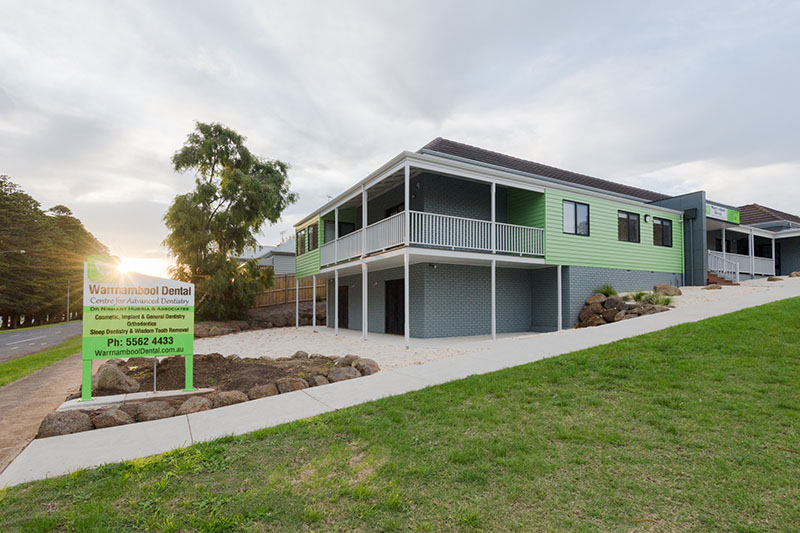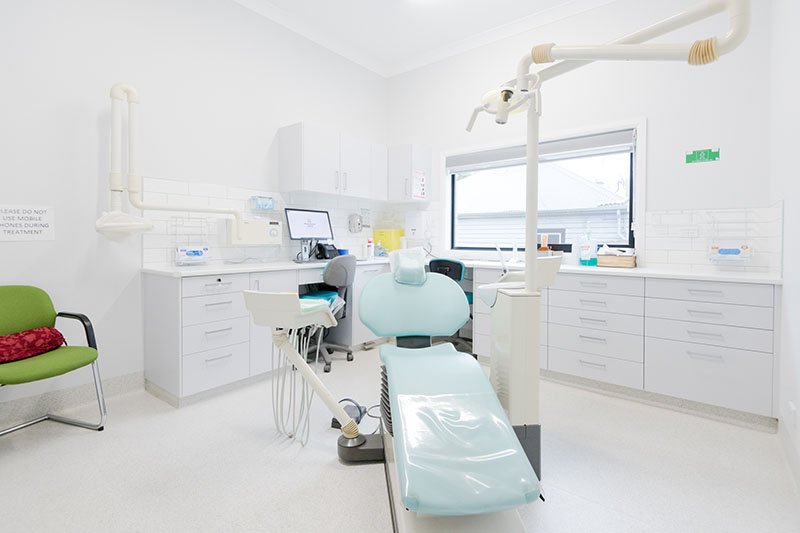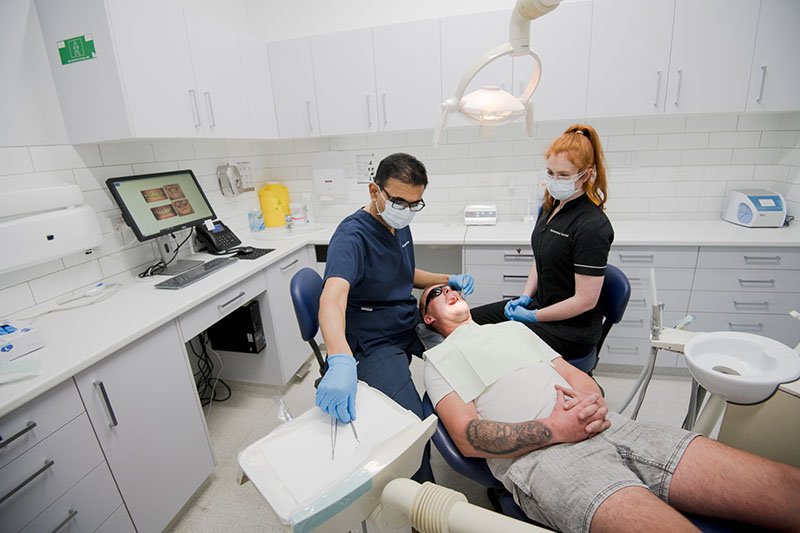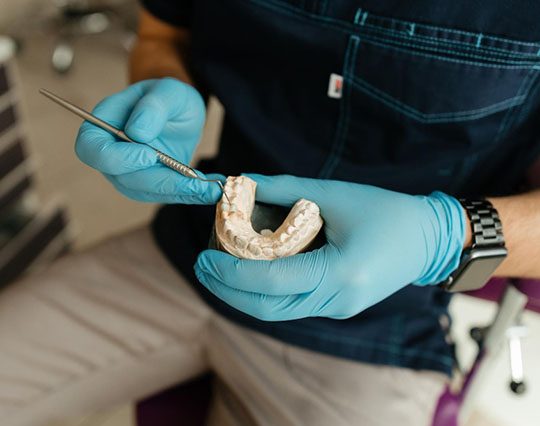Dental Bridges
A PERMANENT APPLIANCE THAT REPLACES MISSING TEETHS
Leading Dental Practice in Warrnambool
Warrnambool Dental is dedicated to helping you create the smile of your dreams with dental bridges.

Dental Bridges Warrnambool
Dental bridges are false teeth that act as an alternative to implants. They replace one or more missing teeth with false teeth that are anchored by surrounding teeth, thus creating a ‘bridge’.
Each false tooth is called a pontic and is either connected to another false tooth or to a crown that connects to a real neighbouring tooth.
When you visit your dentist, they will make take an impression of your teeth in a mould and send it to a dental technician for development.
Excellence
Be sure that you will receive the best treatment & experience.
Be assured that our Warrnambool team shall provide you with The Right Choices.
We are committed to excellence in dental care & service.

5
Reasons to Choose Us
Top-Rated Dentist
Creating the Best Experience
Find Out Why Our Clients Are Smiling
For Your Convenience
Easy Parking in CBD
Dental Expertise
Dr Nishant Hurria
Smile Now, Pay Later
Start Smiling Now!
Claim From Health Funds.
Easy Setup at practice.
Advanced Technology
State-of-the-art Technology
Smile with Full Confidence!
Our Practice
Warrnambool Dental





“Quality is never an accident; it is the result of high intention, sincere effort, intelligent direction and skilful execution; it represents the wise choice of many alternatives.”

Why Should I Get Dental Bridges?
Bridges can offer the perfect solution to missing teeth.
You may choose to get dental bridges to:
- Improve your smile and for cosmetic purposes
- Correct your bite
- Correct your speech, which can be affected by missing teeth
- Restore the shape of your face, which can be affected by missing teeth
- Prevent food from building up in the gap, which can cause gum disease and tooth decay
Types of Dental Bridges

Conventional Bridges
They involve reshaping the teeth on both sides of the gap to make room for attaching crowns on them, with a pontic in between in replacement of the missing tooth.
Cantilever Bridges
Cantilever bridges are used when there are nearby teeth on only one side of the missing tooth.
The pontic is held on only one side, rather than on both sides, by one or two crowned abutments.
It may act as a lever causing complications such as broken teeth or loosened crowns.
There is a high risk at the back of the mouth due to strong molar biting forces that can weaken the bridge.
Maryland Bridges
Maryland bridges are considered conservative alternatives to traditional bridges. These bridges consist of one pontic that is held in place by a framework.
This framework is attached onto the back of the tooth next to the missing tooth with composite resin cement.
Minimal alteration of the adjacent tooth is needed – your dentist will need to remove only a very small portion of tooth from the back surfaces of these teeth.
The strength of the bridge is limited by the strength of the resin that keeps it in place, so it may dislodge if used in the molar areas.
Implant-supported Bridges
Implant-supported bridges are the most stable type of bridges. The dentist surgically attaches tiny biocompatible implants made of titanium in the patient’s jawbone, and these hold the whole restoration.
One implant is installed for every missing tooth. An alternative is a pontic placed between two implant-supported crowns.
Patients who are considering an implant-supported bridge must have enough bone in their jaws to support the implants.
The procedure is expensive, invasive and time-consuming, with long recovery time and post-treatment sensitivity.
However, the outcome of this treatment option can last a lifetime, making it worth the investment.
What Kind of Material Can I Choose From?

You may choose from several types of material when creating your dental crowns, including:
Pure Metal
This material is constructed from high noble or base metal. Expected lifespan 20+ years. Coloured gold or silver. Mid-to-high costs.
Metal and Porcelain
This material is made with metal fused to a coating of porcelain — expected lifespan 10-20 years. Natural tooth-coloured. Mid-to-high costs.
All-Ceramic
This material does not contain metal. Expected lifespan 10-20 years. Mid-to-high costs. Ideal for cosmetic appearance.
We are here to help you answer these & more questions thoroughly.
Call Warrnambool Dental.
A smile can open doors and change lives.
(03) 5562 4433
Frequently Asked Questions
About Dental Bridges
1. What is a dental bridge?
A dental bridge gets its name because it works to “bridge” the gap between missing teeth. Dental crowns are used to replace the missing teeth, and the system of crowns (in other words, the dental bridge) is anchored to the teeth on either side of the gap.
2. Why should I worry about missing teeth?
Missing teeth always have to be replaced. If they are not, then the teeth that remain will begin to crowd into the gap, and this can lead to a bad bite as well as difficulty maintaining proper oral hygiene.
Dental bridges not only restore your bite but also help to forestall decay in the adjacent teeth.
3. Can anyone benefit from dental bridges?
Yes, generally speaking. Complications from dental bridges are very rare, and you will find that a dental bridge will feel and work very much like your own teeth.
As long as the teeth that will work to support your dental bridge are healthy, you can expect to get many years of service from your dental bridge.
4. Are there alternatives to dental bridges?
As previously mentioned, dentists generally recommend implants as the “gold standard” when it comes to replacing teeth that are badly damaged or filling gaps caused by missing teeth.
So, that is one alternative to a dental bridge. The other alternative would be dentures. If you have very few teeth left and do not want dental implants, then you could consider dentures.
5. How do I care for my dental bridges?
Caring for your dental bridge is as easy as caring for your natural teeth: brush and floss and have regular dental check-ups and professional cleanings.
Because dental bridges are permanently fixed in your mouth, you will not have to take your bridge out for cleaning the way you would with dentures.
ABOUT THE AUTHOR

Dr Nishant Hurria
Dr Nishant Hurria is an Australian-based health professional and the principal dentist of Warrnambool Dental with a special interest in Crowns & Bridges and Dental Implants.
